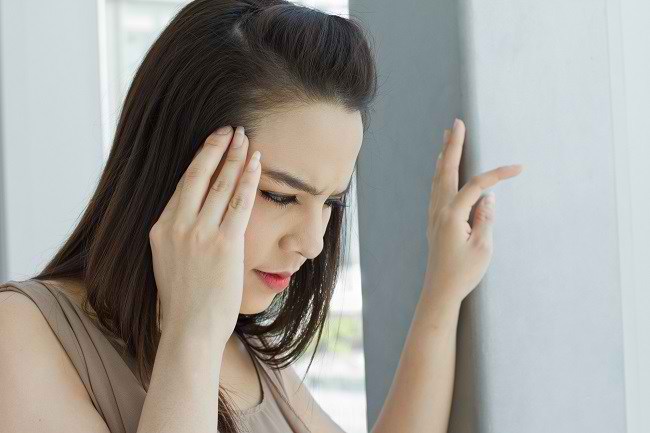Difference between Migraine with Aura and Without Aura
Migraine is a type of headache that can affect both adults and children.
Migraine headaches are generally felt on one side of the head, with moderate to severe intensity. However, migraines need to be distinguished from headaches. Besides the head feels throbbing, migraines can make sufferers experience nausea, vomiting, and more sensitive to light and sound.

In addition, some migraine sufferers can also experience "aura", which is a symptom due to a disturbance in the nervous system that occurs just before or in conjunction with the appearance of headaches and symptoms other migraines. Aura is usually followed by a headache, no later than 60 minutes afterwards.
Aura Characteristics
This aura symptom can occur in 15-30% of migraine sufferers. Auras generally appear gradually every 5-20 minutes, and only last between 5-60 minutes, except for symptoms of motor aura that can last up to 72 hours. In addition, migraine sufferers may experience two or more different aura symptoms in a row.
Aura symptoms need to be distinguished from prodromal and postdromal symptoms, which are symptoms that occur before and after a migraine.
Prodromal symptoms occur several hours or 1-2 days before the appearance of a migraine, which is usually in the form of fatigue, difficulty concentrating, neck stiffness, sensitivity to light or sound, nausea, blurred vision, frequent yawning, and pale face.
While postdromal symptoms occur after the headache disappears, which is usually in the form of fatigue and mood swings (can be happier or sad) up to 48 hours after the migraine disappears.
Types of Aura in Migraine Disease
Aura in migraine can be divided into two kinds, namely the typical aura and not typical. Which includes a special aura is a visual aura (vision), sensory, and speech/ language. While the non-typical aura is motor aura, brainstem, and retina.
1. Visual aura
Visual aura is the most varied form of aura, such as:
- Seeing flashes or flickering lights.
- The view becomes blurry or foggy.
- Blind spots or dark areas appear in the view.
- See zig-zag or colorful lines.
- See dots- certain points, circles, or shapes.
- Narrow field of view or temporary blindness.
2. Sensory aura
This aura is usually in the form of sensations such as pins and needles and tingling or numbness, which can appear anywhere on one side of the body , then spread slowly.
3. Speech or language aura
This aura is characterized by aphasia, which is difficulty in communicating with others. People who experience this aura may find it difficult to determine the right words, difficult to understand writing or speech, difficulty concentrating, look confused, speak like mumbling, or speak slurred.
4. Motor aura
Motor aura is characterized by weakness on one side of the limb. Generally, this aura lasts less than 72 hours. But in some patients, it can last for weeks. Motor aura can occur together with sensory aura.
5. Brainstem aura
Brainstem aura is characterized by at least two of the following symptoms, which can completely disappear on their own, namely:
- Speech disorders
- Head seems to spin
- Ears ringing
- Hearing loss
- Double vision
- Ataxia (impaired coordination of body movements)
- Decreased awareness
6. Retinal aura
This aura is similar to a visual aura, which is characterized by flashes of light, dark spots, or temporary blindness, but occurs repeatedly on one side of the eye only.
Differences in Migraine with Aura and Without Aura
Until now, researchers and doctors have not been able to determine whether a migraine with or without aura is a different disease or are two processes of the same disease
An aura with or without a headache can be said to be a migraine with aura. Migraine with aura that is not accompanied by a headache is also called a silent migraine. Conversely, the diagnosis of migraine without aura is more emphasized on the symptoms of headaches and accompanying symptoms, such as nausea, vomiting, or sensitivity to light and sound.
However, migraine treatment with aura or without aura is no different, because the symptoms aura itself does not require special treatment.
Based on several studies, migraine sufferers with aura have a higher risk of having a stroke due to a blockage (ischemic stroke), atrial fibrillation, and coronary heart disease, when compared with migraine sufferers without aura.
This is also important to note by migraine sufferers with aura who are using hormonal birth control or smoking, because these two factors can increase the risk of stroke even higher. Therefore, women who experience migraine with aura should consult a doctor first if they want to use hormonal birth control.
Aura symptoms are often difficult to distinguish from other more serious neurological disorders, such as stroke, TIA (transient ischaemic attack) or mild stroke, and epilepsy. So, see your doctor as soon as possible if you are experiencing an aura for the first time, especially if this complaint arises after you have had a head injury or severe headache.
You also need to see a doctor if you experience sudden aura symptoms. , last more than an hour, only occur on one side of the eye, or do not improve by itself.
Written by:
Dr. Michael Kevin Robby Setyana
Label : Health
Comments
Post a Comment